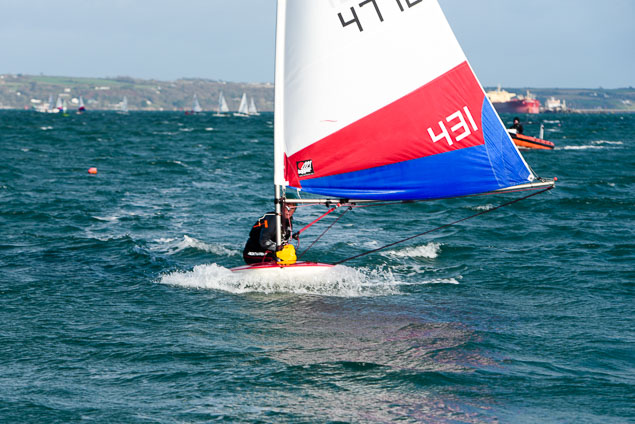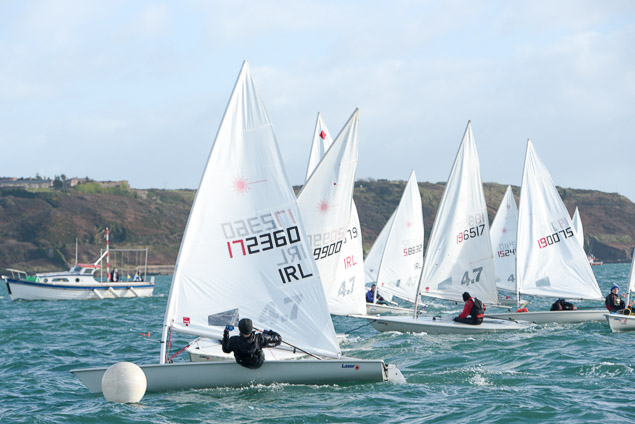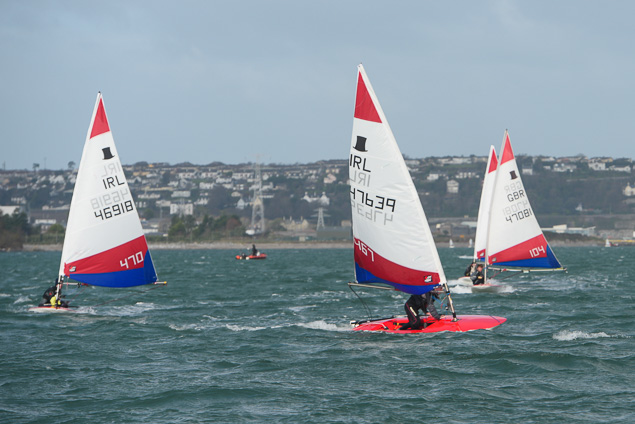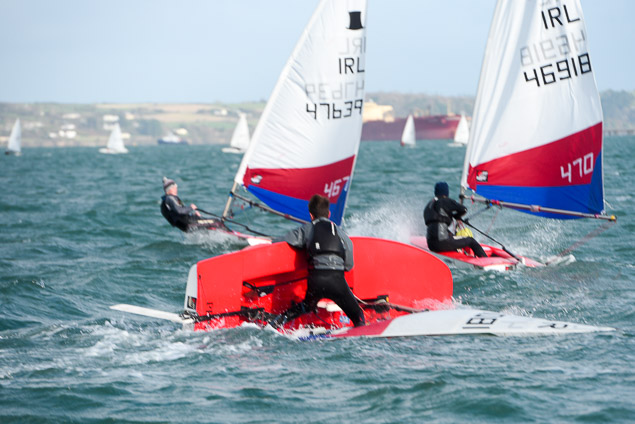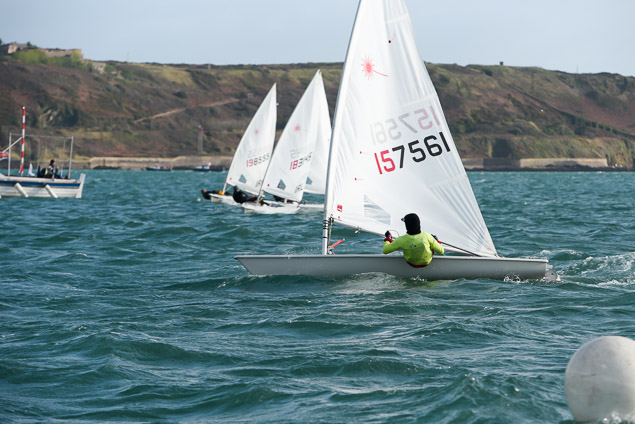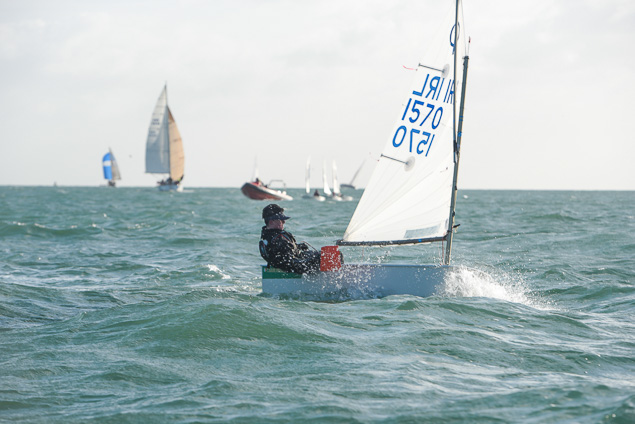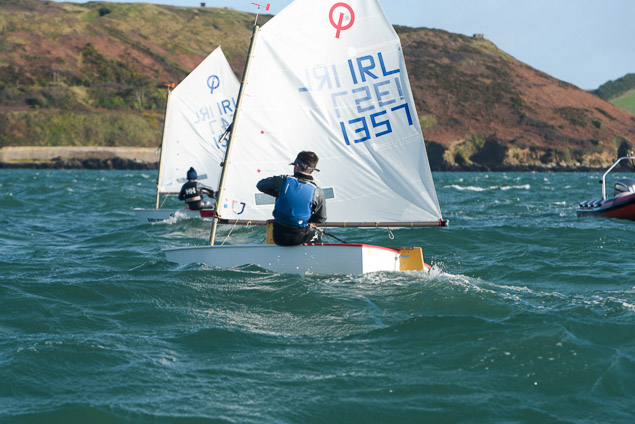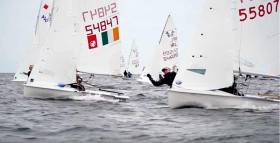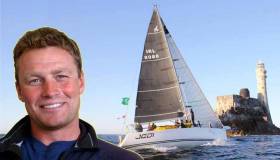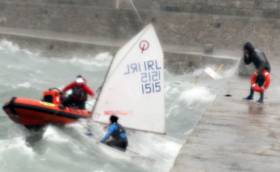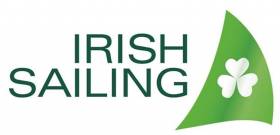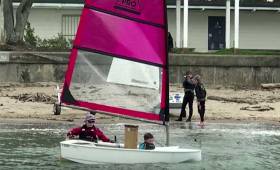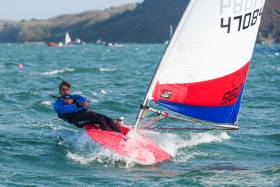Displaying items by tag: Optimist
Youth Champion Sailor Justin Lucas To Contest Ulster Optimist Championships at Malahide
Optimist Youth pathway champion Justin Lucas, who became Afloat.ie Sailor of the Month for his performance on Dublin Bay in April, will be in action at the Ulster Championships at Malahide Yacht Club next weekend.
The fourteen–year–old Tralee Bay and Royal Cork ace is part of a 140–boat fleet expected for the Joe Duffy Motors sponsored dinghy event at the Broadmeadow.
Entries are now closed for the two day regatta on May 19 and 20.
#Optimist - Justin Lucas of the Royal Cork and Tralee Bay placed second at the Magic Marine Easter Regatta in the Netherlands yesterday (Monday 2 April).
A long weekend of sailing on the Braassemermeer northeast of Leiden saw Lucas finish just two points behind the winner, Kerem Erkmen of Turkey, in the final tally.
The two days also saw a strong showing by fellow Team Ireland Optimist sailor Harry Twomey (Royal Cork/Crookhaven Harbour), who was second before leaving early to prepare for trials.
Johnny Flynn, of Howth Yacht Club, came into the final day in third and finished a respectable 15th.
Talent Spotters Focus on Irish Sailing Youth Pathway National Championships on Dublin Bay
There’ll be three race courses, five classes, three evening talks, and 32 counties represented at next month's Volvo Irish Sailing Youth Pathway National Championships taking place 5th – 8th April 2018 in Dun Laoghaire, jointly hosted by the Royal St George Yacht Club and the National Yacht Club.
As well as great racing on the water, and good fun at the club ashore. The evening talks as well as the races are open to all young sailors who sail in the five Irish Sailing Youth Pathway Classes (Laser Radial, Laser 4.7, 420, Topper and Optimist). This is Ireland’s largest Youth regatta and Irish Sailing’s primary talent spotting event of the year for the Academy and Junior classes.
Importantly it’s also one of the few chances in the year when family and friends who are sail in different classes can all sail together at one regatta venue, competing on different courses but on the same waters, giving a brilliant opportunity for shared experiences, learning and fun.
Up to six places on the Irish Sailing Laser 4.7 Squad: Up to six sailors will be chosen at the Irish Sailing Youth Pathway Nationals to join the Irish Sailing Laser 4.7 Squad. The squad will provide training to help young sailors transition in the Laser 4.7 class. It will also aim to prepare and support the squad for the Laser 4.7 World Championship to be held in Gdynia, Poland in July. The squad coach and programme will be announced following the event. Entry to the Laser 4.7 Worlds is independent of Irish Sailing squad selection through the International Laser Class Association.
The four days of racing in Dublin Bay will decide the six places on the 420 European team who will travel to Sisimbra, Portugal in July to compete in the 420 Junior (U18) European Championships.
Irish Sailing Laser Radial & 420 Academy: The Irish Sailing Youth Pathway Nationals is an indicator event (amongst other factors including domestic and international events) for the Irish Sailing Youth Academy. The Academy undergoes a review biannually following the Youth Pathway Nationals and in the autumn each year.
IODAI Irish Optimist Trials: The Optimist trials fleet will take to the water to compete for coveted team spots at the 2018 international regattas. Places for the World Championships in Cyprus, the European Championships in the Netherlands, and the international development team events in both Poland and France are all up for grabs.
Topper class: The Topper World Championships take place in China this year with a strong Irish team travelling to the regatta this year. The Pathway Nationals will provide a good indicator of form as the sailors test themselves against the best in the country as they head into the spring period of their season.
A lineup of evening speakers – open to all: At 5.30pm each evening there will be a talk and Q&A session at the nominated club with speakers who have a deep knowledge of racing. The talks are open to all sailors and parents.
• Thursday 5th – Saturday 7th April, Ross Killian & Sean Evans. Each evening Ross and Sean, the Irish Sailing Performance Coaches will give video analysis and coaching tips from the day’s racing
• Friday 6th April, James O’Callaghan Irish Sailing High Performance Director will talk through the Olympic and Performance Pathway
• Saturday 7th April, Jessie Barr, Sport psychologist currently working at the Sport Ireland Institute. Jessie is a four-time 400m relay Olympian. She has worked with a number of the Laser and 420 Academy sailors.
Tonight at the INSS: From Sailing an Optimist to an Offshore Racing Yacht & Running a Sailing School
As part of the Irish National Sailing School 40th Birthday Celebrations the country's leading sailing school is hosting a series of free talks and events starting tonight when School Principal Kenneth Rumball will share tales about his background and the pursuit of his hobby including the story of the 2017 Rolex Fastnet Race Campaign and how the lessons learned can be used to encourage more people to try sailing in Ireland.
One of the topics Rumball will cover will be the inside story of the INSS's 2017 Fastnet Race Campaign.
Rumball will chat about his dinghy sailing and youth racing which was where he learned his skills. This section of the talk will be of particular interest to parent of young sailors who may like to get involved in this in the future.
The final section of the talk will deal with what is involved with running the largest training centre in Ireland and the UK and some of our plans for the future. We've a few new announcements planned for those in attendance!
The talk is open to all, please do let INSS know if you're coming along, by email to [email protected] or pop along to the INSS centre on the West Pier at 8pm today March 14th 2018.
The Irish tricolour featured very high on the results board at last weekend's IOCA Volvo Gill, Optimist British Spring Championships at Royal Lymington Yacht Club.
Ireland's winning weekend of sailing saw nine sailors in the top 20. The Irish Team took home seconnd place Luke Turvey (HYC & NYC), 3rd place Harry Twomey (RCYC & CHSC), 4th place Johnny Flynn (HYC/ Rsatgyc), 6th James Dwyer Mathews (RCYC/KYC), 9th Hugh Turvey (HYC & NYC), 10th Rocco Wright (HYC/NYC), 11th Justin Lucas (RCYC/TBSC), 15th Michael Crosbie (RCYC) and 20th Patrick Bruen (RCYC).
 Luke Turvey (2nd place), Johnny Flynn (4th place) and Harry Twomey (3rd place)
Luke Turvey (2nd place), Johnny Flynn (4th place) and Harry Twomey (3rd place)
Rocco Wright also took home the Best Junior Sailor trophy and Alana Twomey (RCYC & CHSC) was 2nd Junior girl at the event
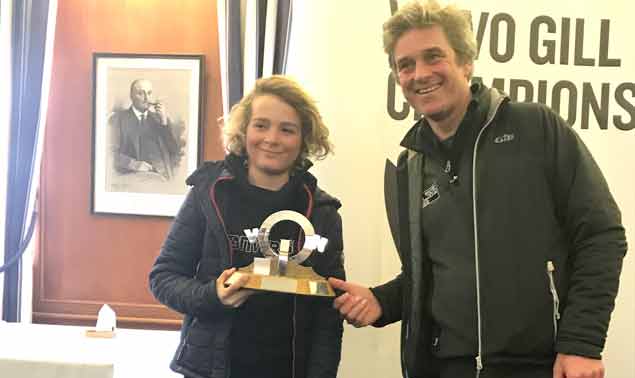 Rocco Wright - Junior Champion
Rocco Wright - Junior Champion
The Irish sailors were supported by Thomas Chaix and Dara O’Shea
Tim Lucas, IODAI President said “It was a wonderful weekend for Irish sailing and a great display of our upcoming talent. It was also great to see our sailors having fun and making new friends with all the British Sailors both on and off the water.”
See the full results here
Optimist Squad Incident Report Criticises Irish Sailing Coaching Systems – Full Report Here
#Optimist - An independent report into an incident involving Irish Sailing’s junior Optimist squad last year, during which almost half the dinghy fleet sustained significant damage, has criticised the organisation’s coaching systems.
Scroll down the page to download the full report.
The review of the October 2017 incident in Dun Laoghaire Harbour, in which seven sailors were forced to abandon their dinghies in high winds while the lead coach’s RIB lost engine power, found that appropriate preparations had not been put in place for the coaching session.
However, the report defended the coach’s decision to launch the junior fleet as a storm approached, finding that he acted “in good faith” and that he believed a two-hour sailing session was possible.
The report’s criticisms focus on the structure behind the sailing programme, finding that “appropriate equipment, resources and facilities were not provided”. Both the lead and assistant coaches had not met until the morning of the training session, were unfamiliar with their RIBs and launched without VHF radio communications.
Early into the coaching session, winds changed direction and gusts increased in strength. Some of the sailors began to experience difficulties as conditions worsened, so it was decided to abandon the coaching session.
Nine of the squad members returned to shore under their own sail power. However, the remainder of the fleet, in a more open leeward position, got caught in unusually high and confused wave patterns near the East Pier. These seven junior sailors were forced to abandon their dinghies, which eventually sustained significant damaged from impact against the pier wall.
By the time the incident escalated to emergency proportions, the lead coach’s RIB was disabled by a fuel-related engine failure and was drifting towards the East Pier wall. The report applauded the actions of the assistant coach who assumed charge and rescued four sailors from the water.
The review found that the Optimist Squad programme was established without “any obvious or adequately structured project management approach” and that there was “a lack of clarity” as to who was responsible for preparing the coaching session.
This in turn led to “hasty and incomplete preparations”, which failed to provide the coaches with a proper induction and failed to provide “the essential resources, facilities and equipment needed” for the coaching session.
The review recommended a “top-down internal review” of the management of performance coaching programmes. It noted that there was “a complete lack of clarity as to who was directly responsible for making and ensuring that adequate practical preparation was made” for the coaching session, adding that “in such circumstances, balance of judgement must swing toward failures of processes and systems which ought to have been in place, rather than on the actions, or omissions, of any of those individuals directly involved.”
Speaking ahead of the publication of the report, at last Friday's Irish Sailing Awards where he gave the opening address, Irish Sailing President Jack Roy said: “As an adventure sport, sailing has its inherent risks. We know this every time we go afloat. We also know we have a duty to protect ourselves and others."
Roy was referring to two heroic rescues that were saluted on the night but he also used the opportunity to tell the gathering that one of the outcomes from the Optimist Incident report includes "a rigorous overhaul of the association’s own safety guidelines that will be extended to all clubs and classes".
On publication of the report today, Roy told Afloat.ie: "Irish Sailing fully supports the outcomes of the report and have appointed a working group to consider the recommendations, assess how best Irish Sailing can address them, and help with the implementation.
"This group has already begun work on the recommendations and are aiming for initial outcomes to be completed by 31st March 2018."
The full report and the executive summary is downloadable below.
North Sails Hails 2017 One Design Victory List
#NorthSails - As previously reported, North Sails celebrated a record-smashing year for offshore yachting titans competing with its 3Di performance sails.
But clients of the sailmaker — with a longstanding base in Myrtleville, Co Cork — also had a big year across the One Design classes around the globe.
In the Etchells class, Stella Blue helmed by Steve Benjamin won the 2017 Worlds in San Francisco at an event where fellow North Sails clients Senet Bischoff and KGB took the Corinthian title and finished third overall.
Elsewhere, in Toronto, Rossi Milev’s Clear Air sailed into first place at the J/24 Worlds, the same event where Lizzy McDowell’s U25 Howth Yacht Club team Scandal finished a respectable 42nd amid the mammoth international field.
Fellow Howth sailor Laura Dillon on Cloud finished 33rd in the Dragon World Championships in Cascais last June, which saw North Sails powering clients into first (Provezza Dragon, Andy Beadsworth), third (Alfie, Lawrie Smith), fourth (Desert Eagle, Hendrik Witzmann), fifth (Rocknrolla, Dmitry Samokhin), ninth (Louise, Grant Gordon) and 10th (Jeanie, Jens Rathsack) places overall.
And Spanish sailor María Perelló, using North Sails’ Radial R2, won the girls division at the Optimist Worlds in Thailand last July, where Ireland enjoyed had a strong showing in team racing.
North Sails is the world’s leading sailmaker for One Design classes with more national, world and Olympic class victories than all other sailmakers combined.
Irish Sailing now says that the independent external investigation into the Optimist Squad incident in Dun Laoghaire that was initially due for publication in mid-November will now be published in December.
Irish Sailing President Jack Roy says he expects that the investigation, having reviewed every aspect of the incident, will result in recommendations which, once implemented, will reduce the likelihood of a recurrence of an event such as this.
In an update on progress, Roy explained the delay in publication is due to the extent of the investigation by the independent investigator Philip Scallan and Ger Keeling.
‘Completing this report has taken longer than expected because time had to be allowed to interview all those who wished to contribute. I am confident its recommendations will lead to a safer sport for all of us’, Roy said.
Two–Handed Optimist Dinghy 'O-Pro' with a Pointy Bow Revealed
A development of the single-handed Optimist dinghy has appeared in New Zealand that converts the boat into a two-handed, planing junior dinghy with a bow!
When his young son asked why Optimists didn’t have a pointy bow like other boats, Matthew Mason developed a clip-on bow and a new rig which can be handled by two lighter kids or one heavier kid.
Mason, a professional boat builder made a presentation on his development at the World Sailing Conference in Mexico earlier this month. He believes the add-on 'could potentially fill in some gaps with children in sailing'.
Listen in to Mason's presentation 'Dad, why doesn't my Optimist have a bow?' below. It also includes video of the 'O-Pro' sailing
Topper, Optimist & Laser Dinghy Sailing at Royal Cork Yacht Club
Royal Cork's annual Topper and Laser dinghy Frostbite League commenced on November 9 in chilly but bright conditions with fifty five dinghies competing. After seven races sailed, Joe O'Sullivan leads the Topper 4.2 fleet, Jonathan O'Shaughnessy leads a 23–boat 5.3 fleet. Conor Horgan is top of a 13–boat Laser 4.7 fleet.
There was great support from Kinsale Yacht Club who joined the Royal Cork contingent on the water under the watchful eye of Ciaran McSweeney, PRO.
It bodes well for the Munster club that has seen a surge in dinghy sailing.
The has seen the RCYC Laser group finish five days of performance coaching over two weekend's with coaches Michal Gryglewski, Cian Byrne and Tom McGrath. The Topper mid term clinic came to a close after four days with Adam D’Arcy, Eoghan O’Regan and guest coach Alan Ruigrok.
The fleets are looking forward to two more Sundays on the water before the prize giving on Sunday 26th November
Results can be found here
